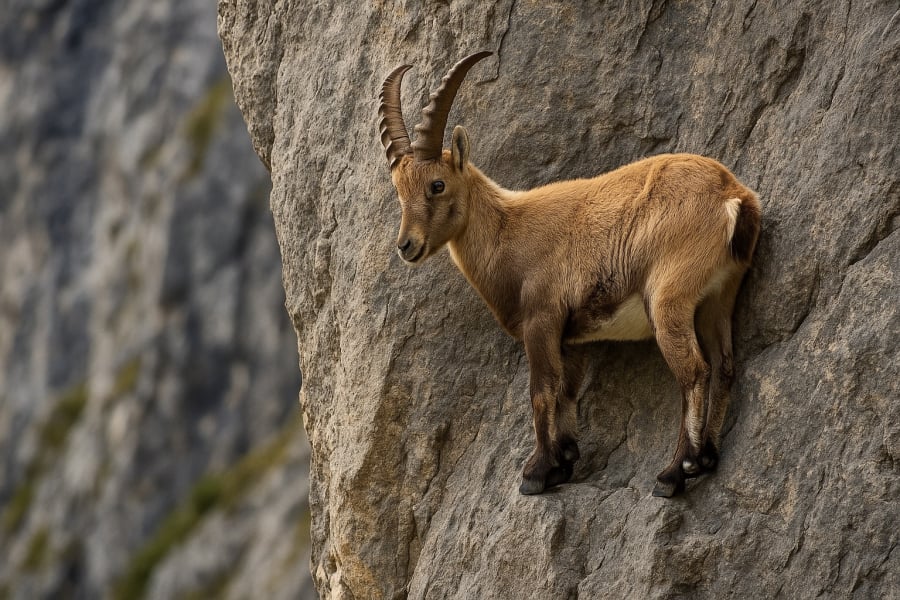The Wonder of Hooves: The Secret to Scaling Cliffs
The key to mountain goats’ incredible climbing abilities (such as the ibex in Europe or bighorn sheep in North America) lies in their specialized hooves. Each of their hooves splits into two flexible toes that can spread apart to grip the tiniest crevices. The hard outer edges provide a firm hold, while the soft inner pad acts like rubber, increasing friction and adhesion. This is similar to wearing specialized climbing shoes, enabling them to maintain balance even on surfaces tilted at almost 90 degrees.
According to VnExpress, Alpine ibex can be spotted precariously perched on the 50-meter-high Cingino dam, licking salt and other minerals from the rock face. Their uniquely adapted hooves and sure-footedness prevent them from falling off the steep cliffs.

A Body Built for Climbing
It’s not just their hooves that are adapted for the challenging environment; mountain goats’ entire bodies are designed for climbing. Their bodies are narrow and long when viewed from the front, allowing them to maneuver through tight passages. Their shoulders and necks are powerfully built, aiding in pulling their bodies upward. Additionally, they possess an extraordinary sense of balance, enabling them to move agilely across uneven and steep terrain.
Researchers Ryan T. Lewinson and Darren J. Stefanyshyn from the University of Calgary analyzed the climbing movements of North American bighorn sheep and identified a two-phase process: push and pull. During the push phase, the hind legs provide a powerful thrust, while in the pull phase, the front legs stay close to the center of gravity to stabilize and lift the body.

Climbing for Survival: A Journey for Salt and Safety
There’s a reason why these goats choose to inhabit such treacherous habitats. They climb high cliffs not only to seek essential salt and minerals but also to evade predators. At these heights, few animals can access them, providing the goats with a safer environment.
“Animal movement can be driven by multiple factors,” says Professor David Saltz from Ben-Gurion University in Israel. “In addition to the salt and minerals from the rocks, avoiding carnivores is also a reason for this behavior.”
Lessons from Mountain Goats: Adapt to Endure
The story of mountain goats’ climbing prowess is not just about survival but also a lesson in adaptation and resilience. We can learn that in life, overcoming challenges sometimes requires change, adaptation, and persistent effort. Like the goats, each small but sure-footed step can lead us to our personal summits.

































